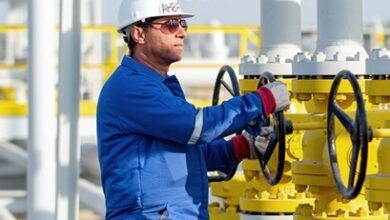Halliburton introduces new drill bit for high-energy applications
Halliburton announced the release of GeoTech HE, a drill bit that incorporates features and materials to deliver enhanced performance and increased reliability in today’s high-energy drilling systems characterized by high weight-on-bit and drilling torque.
Recent years have seen advances in drilling equipment and practices that have enabled operators to significantly increase energy and drilling speed to reduce costs. As a result, drill bits experience higher forces that challenge traditional design theory and materials and significantly increase risk of damage to the bit body material and API connection.
GeoTech HE (high energy) bits are built to function in these challenging conditions. Both the matrix and steel platforms incorporate unique design geometries and features focused on high-energy systems. The new matrix body incorporates a blend of materials, and the new steel body is machined from an advanced alloy material. Both are formulated for increased strength and durability under high torsional and axial loads.
“The launch of GeoTech HE positions us to drive superior levels of performance in the field as we listen and respond to help our customers meet their drilling objectives,” Scott Regimbald, Vice President of Halliburton Drill Bits & Services, said. “As our customers remain focused on reducing costs, we see increased activity in high-energy drilling applications to drill faster and longer wells.”
Each bit begins with Halliburton’s Design at the Customer Interface Process (DATCI), which deploys a global network of technical experts who engage directly with customers for optimization of bit design for a specific application. This process accelerates development and eliminates the lengthy and expensive trial and error approach.
For an operator in the Williston Basin, GeoTech HE drill bits reliably increased drilling speed and decreased the number of days to drill a lateral by 14%. Introduction of the new technology helped increase reliability by reducing the occurrence of high-energy bit damage resulting in zero failure rates to date.




